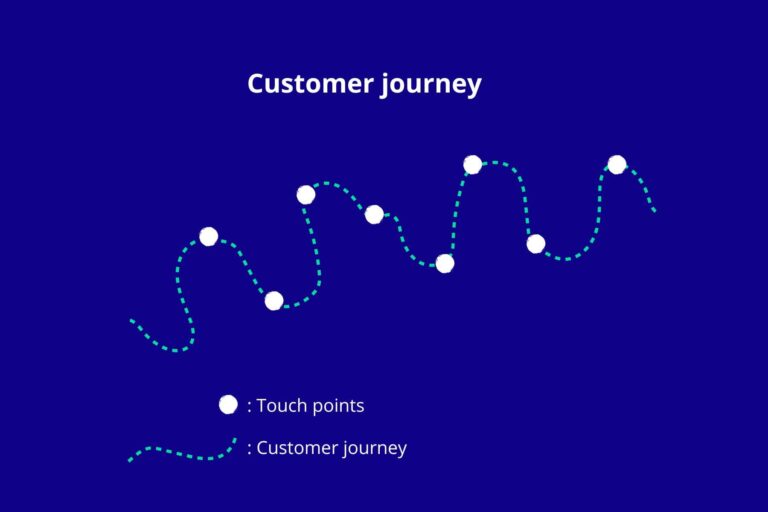How the customer journey impacts your content marketing
As professional marketers, we understand the importance of the customer journey in shaping content marketing strategies. Your customer’s journey is the path they take from awareness of your brand to making a purchase and becoming a loyal and happy customer. It’s a journey that marketers must understand in order to create content that resonates well with their target audience and drives engagement and sales. And in this post, we’ll explore how the customer journey can impact your content marketing efforts.
What is the customer journey?
The customer journey is the path that a customer follows from discovering a company to making a purchase and becoming a loyal customer. It’s important to note that the customer journey is not a linear path. Each customer is unique, and their journey may involve different touch points and channels. However, a typical customer journey may involve the following stages: awareness, consideration, decision, and loyalty.

Like we mentioned: the customer journey is not linear and different people move through it in different ways. The number of touch points needed for every individual is impossible to define. Breaking them down in stages makes it much easier.
Awareness stage
Now, at the awareness stage, customers are only just discovering your brand and may not even know they have a need for your product or service. Content that appeals to this stage includes educational or informative pieces that pique their interest.
For example, if you’re a skincare brand, you could create blog posts or videos that highlight the benefits of healthy skin and why it’s important to take care of it.
This is NOT the time to be selling: people are just starting to get aware of a problem they could be having. So avoid being very commercial in this stage. Trying to close them is not going to work.
The consideration stage
As customers move into the consideration stage, they begin to explore their options and research products or services that could address the needs they have. Content that resonates with this stage could include product reviews, comparison guides, or interactive quizzes that help them narrow down their options.
For example, a software company could create a comparison guide that highlights the features and benefits of their product compared to competitors.
The decision stage
At the decision stage, customers are ready to make a purchase. This is decision time. Content that can help them convert could include testimonials, case studies, or free trials that demonstrate the value of your product or service.
For instance, a fitness brand could create a success story that showcases a customer’s transformation after using their products.
Loyalty stage
Finally, at the loyalty stage, customers become repeat purchasers and advocates for your brand. Content that appeals to people in this stage includes loyalty programs, newsletters, and exclusive content that rewards their loyalty.
For example, a food delivery company could offer discounts and special promotions to their loyal customers.
The goal here is to reward people for being a loyal customer, so that they will keep on buying from you. And a happy customer is also a good ambassador for your brand: they will attract new customers for you.
In conclusion, understanding the customer journey is critical for creating a content marketing strategy that resonates with your audience. By creating content that speaks to each stage of the journey, you can drive engagement, trust, and loyalty with your customers. So, don’t forget to keep this in mind when creating your next piece of content.
By the way, did you know that the average person spends about 6 hours and 42 minutes per week reading blogs? Keep that in mind as you create your next post!
Content marketing strategy
Looking for a simple plan to create a content marketing strategy that works for you? Click the button and get your copy of our 10 step plan today!






